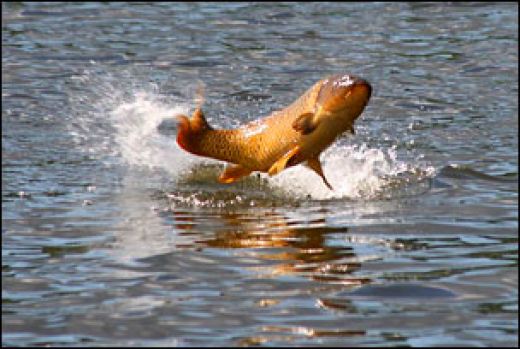Carp Fishing versus Bass Fishing

There are some specific differences between Carp fishing versus Bass fishing. Ultimately an in an attempt at unbiased journalism, it is fair to say many fisherman discover a preference within themselves, based on a number of professional and personal standards. In the end however, the choice between fishing preferences illustrates a true fisherman’s passion for sentiment amongst the fishing craft.
Deciding a preference on Carp versus Bass fishing delegates an introspective glance into not just the sport of fishing but the type of person a fisherman is entirely. This is because the decision splits hairs over the differences between trophy fishing and fishing for a quality meal.
First and foremost, it is necessary for you to know the aging difference of both types of fish. In Carp fishing, the young Carp are less sensitive to the environmental conditions. They do not easily die in case there are somehow ultra extreme weather conditions that may occur in certain places. The young Carp can easily swim their way through the advanced stages of prolonged harsh environments but are not usually particularly well liked for a meal. On the other hand, Bass are slightly more sensitive to the cold, or frigid temperatures, when compared to Carp. When there are some changes in the environment, Bass fish experience stress making them more difficult to fish in more tumultuous areas.
Many fisherman also will come under the impression that because Carp survive in more areas and for longer periods ,(and in greater numbers) that Carp fishing is easier. Specifically, carp fishing can be easily attracted by enthusiasts who simply want a mantle piece for their home or office. Many fisherman also easily catch Carp, since during their seasonal reproduction Carp proliferate in a “bunched” matter, often splashing the surface of the water giving away their position. There is no need to do a lot of trapping techniques in order to get the first and the succeeding catches you want, it’s even easier than that. On the other hand, bass fishing is a little more meticulous and challenging.
When it comes to size, Carp fishing takes the cake by a large margin, as a commonplace trophy fish. If you want to commercialize your feats on the water, than maybe Carp fishing is your thing. Moreover, you can also bring in huge numbers of Carp since they are so commonly reproducing alongside one another, as mentioned earlier. In the case of your bass fishing, you will found out that these fish come in smaller more elusive sizes, when compared to Carp. The size of Bass depends on the size of the body of water, where large mouth Bass weighing in at huge weights is more rare and displays more expertise of a true fishing enthusiast.
This is information you have to keep in mind in terms of Carp fishing versus Bass fishing, where to go and how to fish for these very different aquatic specimens. Carp tend to be bottom feeders, the choice for which is more delicious when prepared is easy, that is Bass. Bass are sportier, but Carp are the more demanding fish to catch, making them an ideal fishing target. Carp will fight the line for as long as a fisherman allows and make a great story to tell every catch. Fishing for Carp is argued by many as more exciting and provoking, nevertheless whichever your fish of choice, have fun fishing!